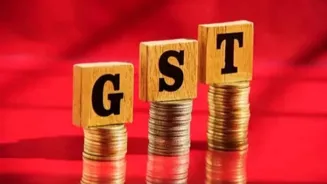India's latest round of Goods and Services Tax (GST) rationalisation, also known as GST 2.0, is expected to become a major catalyst for domestic consumption
in the financial year 2026, according to a recent report by the State Bank of India (SBI). Despite an estimated revenue loss of ₹85,000 crore, the revamped GST system is expected to lift spending by ₹1.98 lakhs. As per the report, "The GST 2.0 regime....is estimated to have boosted consumption by ₹1.98 lakh crore." This jump in spending stems from lower indirect taxes, effectively increasing household and business purchasing power. GST 2.0 Combined With Income Tax Cuts When paired with recent income tax rate reductions, the boost becomes even more substantial, claims the report. The report further noted that the income tax cut alone led to ₹1 lakh crore in revenue loss, but translated into an impressive ₹3.33 lakh crore increase in consumer spending. Combined, the two reforms are projected to push overall consumption up by ₹5.31 lakh crore, or roughly 1.6 per cent of the GDP. The report claims that this increase in household demand reflects the power of well-structured fiscal changes. By increasing disposable incomes through direct and indirect tax relief, these measures are likely to support sustained growth. Future Revenue Potential The report outlines a two-stage mechanism for how tax reductions influence consumption. First, consumers spend a portion of the savings based on their marginal propensity to consume (MPC), which is estimated at 0.7, leading to an initial ₹70,000 crore in added consumption. This, in turn, triggers further rounds of spending through the multiplier effect. Even factoring in the ₹85,000 crore GST shortfall, the SBI study estimates a net gain. A ₹5.5 lakh crore boost in consumption with an average tax rate of 9.5 per cent could generate ₹52,000 crore in fresh GST revenue, equally benefiting both the Centre and states. Additionally, the report highlighted that the Centre has outperformed its tax revenue targets by ₹2.26 trillion on average over the past four years, offering enough room to absorb these reforms without fiscal strain.











